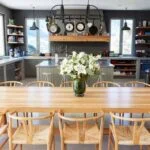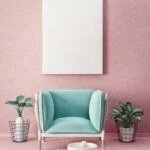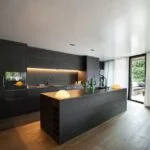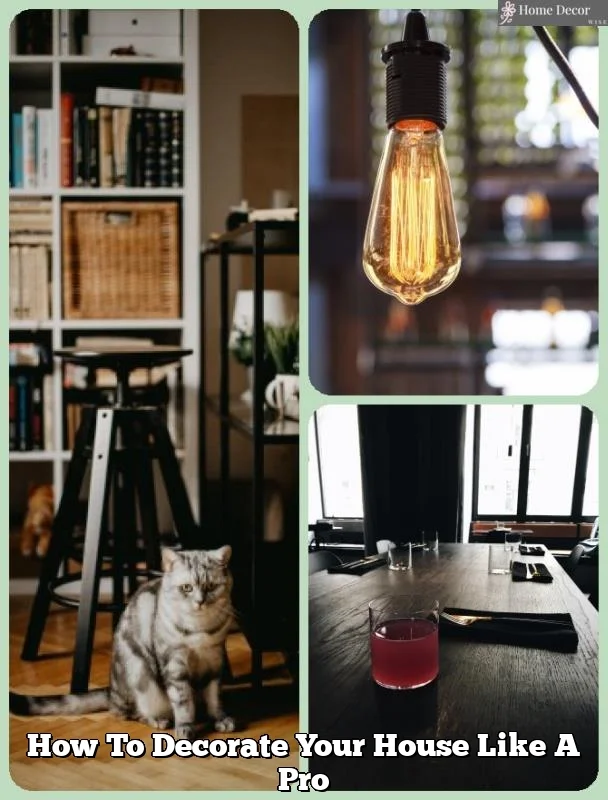Stucco homes have a distinct charm and character that sets them apart from other types of houses. The versatility and durability of stucco make it a popular choice among homeowners, not to mention its ability to withstand harsh weather conditions.
In this article, we will explore the various aspects of decorating a stucco home, from choosing the right color palette to incorporating art and decorative elements. Whether you have recently purchased a stucco home or are looking for ways to refresh your current one, this guide will provide you with valuable insights on how to make your stucco home truly shine.
Stucco, a cement-based material, has been widely used in construction for centuries due to its strength and fire-resistant properties. This textured finish is commonly applied to both interior and exterior walls, lending a unique visual appeal to homes. One of the outstanding features of stucco homes is their versatile design potential.
Unlike other building materials, stucco can be formed into various shapes and can be finished with different textures, allowing homeowners to embrace diverse architectural styles. Additionally, due to its thickness and density, stucco helps regulate temperature inside the house by providing an insulating effect.
When it comes to decorating a stucco home, it is important to consider its distinct characteristics in order to create a cohesive and visually pleasing aesthetic. The color palette plays a crucial role in enhancing the stucco texture and overall curb appeal.
Colors that complement the natural tones of stucco can bring out its unique qualities and highlight architectural features. Furthermore, paying attention to exterior decor elements such as landscaping choices and lighting fixtures can further enhance the beauty of a stucco home’s exterior.
Choosing the Right Color Palette for Your Stucco Home
When it comes to decorating a stucco home, choosing the right color palette is essential in enhancing its overall aesthetic appeal. The colors you select should not only complement the texture of the stucco but also highlight its unique architectural features. Here are some tips to help you choose the perfect color palette for your stucco home:
- Consider the Stucco Texture: Stucco homes have a distinct textured surface that adds depth and character to the exterior. When selecting colors, take into account the texture of the stucco and choose shades that will enhance its visual appeal. For example, earthy tones like warm beiges, sandy yellows, or rich terracottas can bring out the natural beauty of stucco.
- Go for Complementary Colors: Look for colors that complement the existing hues of your stucco home. For instance, if your stucco has a cool gray undertone, consider pairing it with complementary warm colors such as oranges or deep browns. This combination creates an inviting and harmonious look.
- Accentuate Architectural Features: Another approach is to use contrasting colors to draw attention to specific architectural features of your stucco home. For example, if you have decorative trim or moldings on your exterior walls, choose a slightly lighter or darker shade than the main color to make these details stand out.
- Test Samples: Before committing to a particular color palette, it’s important to test samples on various areas of your stucco home. Different lighting conditions can affect how colors appear on different parts of the house throughout the day. By testing small patches, you can see how each color interacts with your specific environment and make an informed decision.
By carefully selecting a color palette that complements your stucco texture and enhances its features, you can transform the exterior of your home into a visually appealing masterpiece that reflects your personal style and taste.
Exterior Decor
When it comes to stucco homes, enhancing curb appeal is crucial in creating a visually appealing and inviting exterior. The unique texture of stucco provides endless possibilities for creative landscaping, architectural details, and lighting that can truly elevate the overall appearance of your home. In this section, we will explore some creative ideas on how to enhance the exterior of a stucco home and discuss the importance of regular cleaning and maintenance to preserve its long-lasting beauty.
Landscape Design: Creating a Welcoming Entrance
A well-designed landscape can greatly enhance the curb appeal of a stucco home. One way to create an inviting entrance is by adding planters or flower beds near the front door. Choose plants that complement the color palette of your stucco and add visual interest with different heights, textures, and colors. Incorporating native plants and utilizing sustainable landscaping practices not only enhances the aesthetic appeal but also contributes to environmental conservation.
Another way to enhance the exterior is by adding walkways or pathways leading up to your front door. This not only creates a clear path for guests but also adds architectural interest. Consider using materials such as stone or pavers that complement the texture of your stucco walls. Adding outdoor seating areas or a patio can provide additional charm and functionality while accentuating the beauty of your home.
Architectural Details: Adding Character
Take advantage of the versatility of stucco by incorporating architectural details that enhance your home’s exterior. Decorative moldings, corbels, or trim can add character and dimension to plain stucco walls. Consider choosing details that match the style of your home, whether it be Spanish Colonial, Mediterranean, or Contemporary.
Another idea is to add window boxes filled with flowers or greenery. They not only add color but also bring attention to your windows and highlight their architectural features. Additionally, consider installing decorative shutters or awnings that complement the stucco texture and enhance the overall aesthetic appeal of your home.
Maintenance: Preserving the Beauty
To preserve the long-lasting beauty of your stucco, it is important to establish a regular cleaning and maintenance routine. Stucco surfaces should be cleaned at least once a year to remove dirt, grime, and stains. This can be done using a garden hose, mild detergent, and a soft brush. Regular inspections of your stucco exterior will help identify any cracks or damage that need to be repaired promptly.
In addition to cleaning, it is also crucial to maintain proper drainage around your home. Ensure that gutters are clear from debris and functioning properly to prevent water from pooling near the stucco walls. Proper drainage will prevent moisture from seeping into the stucco, which can lead to mold growth or other structural issues.
By paying attention to these exterior decor ideas and practicing regular maintenance, you can greatly enhance the curb appeal of your stucco home while preserving its unique beauty for years to come.
Stucco-Specific Interior Design Considerations
Addressing the Unique Challenges
When it comes to decorating the interior of a stucco home, there are some unique challenges that homeowners may face. Stucco walls have a distinct texture and appearance, which can make it tricky to seamlessly incorporate different design styles. However, with some creativity and careful planning, you can successfully decorate the interior of your stucco home.
One challenge is finding the right balance between creating interest and avoiding overwhelming the space. Stucco walls already provide visual texture and depth, so you want to be mindful of not adding too much busyness or conflicting patterns. Instead, focus on incorporating complementary textures in your decor to enhance the stucco’s natural beauty. For example, consider adding a plush rug or textured throw pillows to soften the overall look.
Another consideration when decorating a stucco home is choosing furniture and materials that complement the stucco walls. Opt for furniture pieces with clean lines and simple silhouettes to create a cohesive look. You can also choose materials that contrast nicely with the roughness of stucco walls, such as smooth leather upholstery or polished wood accents.
Mixing Materials and Textures
To add more visual interest to your stucco walls, consider mixing various materials and textures in your interior design. This can help break up the monotony of the stucco while still maintaining its unique charm.
One option is to incorporate artwork or wall hangings that feature different textures or styles. For instance, you could hang a metal sculpture against one wall or display a delicate tapestry on another. These contrasting elements can create focal points in your space and draw attention away from solely focusing on the stucco texture.
Additionally, consider introducing other materials like wood or glass through furniture pieces or decorative accessories. A wooden coffee table or glass display shelves can provide an intriguing contrast against the roughness of stucco walls. By strategically placing these items throughout your space, you can create a harmonious blend of different textures and materials.
Creative Wall Treatments
In addition to incorporating different materials and textures, you can also consider adding unique wall treatments to enhance the interior of your stucco home. One popular option is to use wallpaper or paint with interesting patterns or textures on one or two accent walls. This can bring an extra layer of depth and visual interest to the space without overpowering the stucco texture.
Another creative idea is to utilize stucco techniques on specific interior walls while leaving others smooth. This combination of textures within your home can add a dynamic element to your overall design. Consider applying stucco texture to a focal point wall, such as behind a fireplace or in the dining area, while keeping adjacent walls smooth. This variation will draw attention to those areas and highlight them as special features in your home.
By addressing the unique challenges of decorating stucco interiors, mixing materials and textures, and exploring creative wall treatments, you can create an inviting and visually appealing interior design for your stucco home. Don’t be afraid to experiment with various styles and elements until you achieve a look that reflects your personal taste while still highlighting the beauty of the stucco walls.
Selecting the Right Furniture and Accessories
When decorating a stucco home, it is essential to choose furniture and accessories that complement the texture of the stucco walls and create a cohesive interior design. By selecting the right pieces, you can enhance the overall aesthetic appeal of your home. Here are some guidelines to help you select the right furniture and accessories for your stucco home:
- Consider the materials: When it comes to furniture, opt for materials that work well with stucco walls such as natural wood, rattan, or wrought iron. These materials can add warmth and texture to the space while creating a harmonious balance between the stucco walls and the furniture.
- Pay attention to colors: It is important to choose colors that complement the color palette of your stucco walls. Neutral tones such as beige, taupe, or gray are great options as they can provide a subtle backdrop for the stucco texture without overpowering it. Additionally, consider incorporating pops of color through accessories like throw pillows or rugs to add visual interest.
- Embrace minimalism: Stucco walls often have a clean and sleek appearance, so it is beneficial to choose furniture that embraces minimalist design principles. Opt for streamlined and simple silhouettes that will not compete with or overwhelm the stucco texture.
- Incorporate texture: Since stucco wall surfaces can be quite textured themselves, it is important to balance this out with different textures in your furniture and accessories. Consider adding elements like plush velvet cushions, woven fabrics, or faux fur throws to create depth and visual interest in your space.
- Scale appropriately: Be mindful of scale when choosing furniture for your stucco home. Oversized furniture may overpower the space and make it feel cramped while small-scale pieces may get lost against the textured backdrop. Take measurements beforehand to ensure each piece fits properly within its designated area.
In addition to selecting furniture, carefully choose accessories that complement the stucco walls. Consider incorporating artwork, mirrors, or decorative objects that have interesting shapes, textures, and colors to add depth and personality to the space. By carefully curating your furniture and accessories, you can create a cohesive and visually appealing interior design that beautifully showcases the unique characteristics of your stucco home.
Window Treatments for Stucco Homes
When it comes to window treatments for stucco homes, it is important to consider options that enhance the natural light and architectural features while maintaining the integrity of the stucco walls. The right window treatments can not only add beauty and functionality to your home but also complement the overall aesthetic appeal of your stucco exterior.
One popular option for window treatments in stucco homes is curtains. When choosing curtain styles, opt for lightweight fabrics and flowing designs that create an airy and elegant look. Sheer curtains are a great choice as they allow natural light to filter through while providing privacy. To further enhance the overall design, consider using curtain tiebacks or holdbacks that match the style of your stucco home, such as wrought iron or brushed metal finishes.
Another option for window treatments in stucco homes is blinds or shutters. These provide a more practical solution by allowing you to control the amount of light entering your space while still maintaining a stylish appearance. Wooden blinds or shutters can add warmth and texture, complementing the natural elements of stucco walls. For a more modern look, consider faux wood or metal blinds that offer clean lines and sleek finishes.
In addition to choosing the right type of window treatment, it is also important to select colors that work well with your stucco finish. Neutral tones are a popular choice as they seamlessly blend with various color palettes. However, don’t be afraid to experiment with bolder colors or patterns if they complement your overall interior design style.
By carefully selecting window treatments that enhance both the beauty of your home’s exterior and your interior design style, you can create a cohesive look throughout your stucco home while ensuring functionality and privacy are met. Remember to take into consideration factors such as natural light, architectural features, and personal preferences when making choices for window treatments in your stucco home.
Incorporating Art and Decorative Elements
When it comes to decorating a stucco home, incorporating art and decorative elements can add personality and style to the space. However, it is important to do so in a way that does not compromise the integrity of the stucco walls. By considering scale, color, and texture, you can create a visually appealing arrangement that enhances the overall aesthetic of your home.
One creative way to display artwork on stucco walls is by using lightweight materials such as canvas prints or framed photographs. These can be easily hung using adhesive hooks or picture hanging strips, which minimize damage to the wall surface. Another option is to utilize floating shelves or display ledges to showcase smaller pieces of art or decorative items.
When selecting artwork for your stucco home, consider the scale of the pieces in relation to the wall they will be displayed on. Large-scale artwork can create a dramatic focal point in a room with high ceilings, while smaller pieces may work better in areas with limited wall space. Additionally, consider the color palette of your artwork and how it complements or contrasts with the stucco walls. This will help create a cohesive and visually pleasing look.
In addition to artwork, decorative elements such as mirrors and wall sculptures can also enhance the aesthetic appeal of your stucco home. Mirrors can help reflect light and make rooms appear larger, while wall sculptures add dimension and texture to plain walls. When incorporating these elements into your decor, be mindful of their placement and how they interact with other design elements in the space.
By thoughtfully incorporating art and decorative elements into your stucco home, you can personalize the space and make it truly yours. Experiment with different arrangements and styles to find what suits your taste best while still maintaining the integrity of your stucco walls.
| Artwork Placement Tips | Decorative Element Ideas |
|---|---|
| Consider scale and color when selecting artwork | Use mirrors to reflect light and make rooms appear larger |
| Hang lightweight artwork using adhesive hooks or picture hanging strips | Add wall sculptures for dimension and texture |
| Create a cohesive look by considering the overall aesthetic of your stucco home | Experiment with different arrangements to find what suits your taste best |
Lighting Solutions for Stucco Homes
One of the key elements in decorating a stucco home is choosing the right lighting solutions. Proper lighting can enhance the beauty of stucco walls and create a welcoming ambiance both inside and outside the home. In this section, we will explore different lighting techniques and fixtures that can be used to highlight the architectural details of a stucco home.
When it comes to lighting a stucco home, it is important to balance general, task, and accent lighting. General lighting provides overall illumination for a room or space, while task lighting focuses on specific areas where activities such as reading or cooking take place. Accent lighting is used to highlight architectural features or decorative elements.
To incorporate general lighting in your stucco home, consider using recessed ceiling lights or pendant lights. These types of fixtures provide even illumination throughout a room and can be adjusted to create different moods. For task lighting, you may want to install under-cabinet lights in the kitchen or adjustable wall-mounted lights near work desks or reading corners.
Accent lighting can be achieved by using wall sconces, track lights, or uplights to highlight specific areas such as textured stucco walls, artwork, or other decorative elements. It is important to position these light fixtures strategically to avoid casting harsh shadows on the textured surfaces.
In addition to choosing the right fixtures, consider using energy-efficient bulbs that provide warm and natural light. LED bulbs are a popular choice because they consume less energy and have a longer lifespan compared to traditional incandescent bulbs.
By carefully considering your lighting options and utilizing different techniques and fixtures throughout your stucco home, you can enhance its architectural features and create an inviting atmosphere that complements your personal style.
| Lighting Techniques | Lighting Fixtures |
|---|---|
| General Lighting | Recessed ceiling lights, pendant lights |
| Task Lighting | Under-cabinet lights, adjustable wall-mounted lights |
| Accent Lighting | Wall sconces, track lights, uplights |
Conclusion
In conclusion, decorating a stucco home offers endless possibilities for personalization and customization. By understanding the unique characteristics of stucco homes and considering the specific design considerations, homeowners can create a space that reflects their individual style and enhances the beauty of their home.
When choosing colors for your stucco home, it is important to select hues that complement the texture and enhance the overall aesthetic appeal. By utilizing color schemes that enhance the architectural features of your stucco home, you can create a harmonious exterior that stands out in your neighborhood.
Enhancing curb appeal goes beyond just selecting colors. Landscaping, architectural details, and lighting also play a crucial role in accentuating the exterior of your stucco home. Regular cleaning and maintenance are essential to preserve its long-lasting beauty.
Inside your stucco home, incorporating various design styles can be challenging. However, by mixing different materials and textures, you can add visual interest to your stucco walls while maintaining a cohesive interior design. Carefully selecting furniture and accessories that complement the stucco texture further adds to this cohesive look.
Balancing natural light and enhancing architectural features are key when choosing window treatments for your stucco home. Consider curtain styles, blinds, or shutters that not only suit various room settings but also maintain the integrity of your stucco walls.
By displaying artwork and decorative elements on your stucco walls with consideration for scale, color, and texture, you can create visually appealing arrangements without compromising the integrity of your walls. Additionally, using appropriate lighting techniques and fixtures can further enhance the beauty of your stucco walls while creating a welcoming ambiance.
In personalized stucco homes, there are no set rules – it is all about embracing one’s own personal style and experimenting with various decor options. Whether you prefer bold or subtle choices, make sure to reflect your unique taste throughout every aspect of your stucco home. By taking the time to understand the individuality of your stucco home and incorporating your personal style, you can create a space that is truly one-of-a-kind.
Frequently Asked Questions
How can I make my stucco house look better?
To make your stucco house look better, there are a few key approaches you can take. First, consider the colors. A fresh coat of paint can do wonders in transforming the appearance of your stucco house. Choose colors that complement the style of your home and the surrounding landscape.
Additionally, landscaping can greatly enhance the overall appearance. Plant flowers, shrubs, or trees to add a touch of vibrancy and dimension to the exterior. Adding architectural elements such as trim or decorative accents can also elevate the aesthetics of your stucco house. Finally, ensure that any cracks or damage in the stucco are repaired promptly to maintain a clean and polished look.
How do you decorate over stucco?
Decorating over stucco requires some special considerations due to its textured surface. One effective way to decorate is by using curated art pieces or wall hangings that can easily be mounted onto the stucco surface. Consider selecting items that are lightweight and easy to secure without causing damage to the stucco finish.
Another option is to utilize outdoor lighting fixtures strategically placed on walls or around windows to accentuate and enhance specific areas of your home’s exterior texture. Incorporating potted plants or hanging baskets can also bring color and life to your stucco walls, softening their appearance.
What looks good with stucco?
Stucco offers a versatile backdrop for various design styles, so many options look good with it depending on personal preference and architectural context. For a classic and timeless look, consider pairing stucco with natural materials like wood or stone accents. This combination adds depth and contrast while maintaining an elegant aesthetic appeal.
Alternatively, if you prefer a contemporary vibe, opt for sleek metal finishes such as stainless steel railings or fixtures against your stucco cladding for a stylish contrast between textures. Lastly, landscaping choices play a crucial role in enhancing how stucco looks; lush greenery with pops of vibrant flowers or sculptural plantings can create a visually striking contrast against the stucco exterior, making it even more appealing.

I’m thrilled to be your companion on this exciting journey through the world of home decor and design. With a passion for turning houses into homes and a keen eye for the finer details, I’m here to help you transform your living spaces into beautiful, functional, and meaningful havens.





